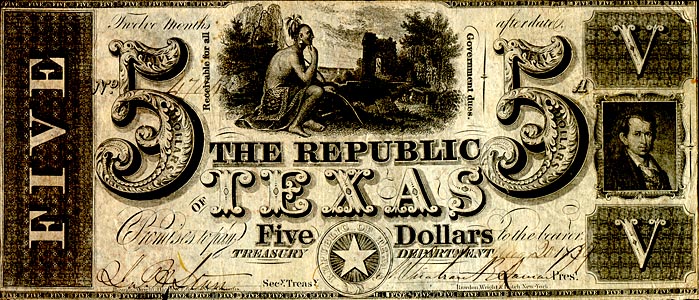
Erastus "Deaf" Smith (April 19, 1787 – November 30, 1837):
Smith was born in Duchess County, New York, and was the son of Chilab and Mary Smith. Erastus moved to Texas in 1821 for a short time for health reasons, which resulted in a partial loss of hearing, hence the nickname "Deaf" Smith, pronounced Deaf Smith.
Smith married Guadalupe Ruiz Duranthe, a widow, in 1828 and had four children, Susan, Gertrudes,Travis and Simona. Susan C. Deaf Smith moved freely between both Anglo and Hispanic Tejano societies, since his wife was Tajano. He was known to be a man of few words, fiercely loyal to his superiors and dedicated to the job at hand. Because of his knowledge of both Anglo and Hispanic cultures and the terrain of Texas, he served as a guide, scout and spy for the army.
Even as many Texas settlers formed an army and marched on San Antonio de Bexar, Smith originally intended to remain neutral. He changed his mind after the Texian Army, led by Stephen F. Austin, initiated a siege of Bexar. When the siege began, Smith and his son-in-law were on a hunting trip and when they returned, the Mexican army increased security in the town, and refused to allow them to return to their homes in the city. An indignant Smith immediately joined the Texian Army. He wrote to Austin: "I told you yesterday that I would not take sides in this war but, Sir, I now tender you my services as the Mexicans acted rascally with me".
His was very skilled in gathering important informmation, which was a great asset at the Battle of Concepcion in October 1835. At this battle, he discovered the mule train that brought on the Grass Fight, in December 1835. He guided troops into San Antonio in the Siege and Battle of Bexar where he was wounded atop the Veramendi House at the same time that Ben Milam was killed. After the evacuation of centralista troops from San Antonio, he moved his family to Columbia and met General Sam Houston.
In Gonzales with Houston, Smith was assigned to Captain Karnes' Cavalry Company of the 1st Regiment of Volunteers and placed in command of new recruits. Smith operated continuously on the way to, at, and after the Battle of San Jacinto with small groups of volunteers from the cavalry unit and sometimes other units, successfully collecting intelligence and special missions almost continuously. At Harrisburg, he captured a Mexican courier with dispatches revealing the strength and position of Antonio Lopez de Satna Anna's army. Since he knew the location of Santa Anna's army, on April 21, prior to the Battle of San Jacinto, he and his men destroyed Vince's Bridge so there was no way to retreat for both armies. He was the courier that took the captured Santa Anna's orders to General Filisola's army to retreat from Texas.
After the Battle of San Jacinto, Smith started a company of twenty Texas Rangers.Smith died in Richmond, Texas, at age of fifty, at the home of Randall Jones. He is buried in the Episcopal churchyard there with a modest marker that reads, "Deaf Smith, The Texas Spy, Died Nov. 30, 1837. To honor him, his picture was placed on the five dollar bill, before Lincoln, and Deaf Smith County was named after him.

References:
Deaf Smith. (n.d.) In Wikipedia online. Retrieved July 2, 2009, from http://en.wikipedia.org/wiki/Deaf_Smith
Fookembug (March 17, 2007). Deaf Smith's Picture in a Real $5 Before Lincoln. Retrieved July 2, 2009, from http://fookembug.wordpress.com/2007/03/27/deaf-smiths-picture-in-a-real-texas-5-dollar-bill-before-lincoln/
History of Deaf Culture
Comments (0)
You don't have permission to comment on this page.